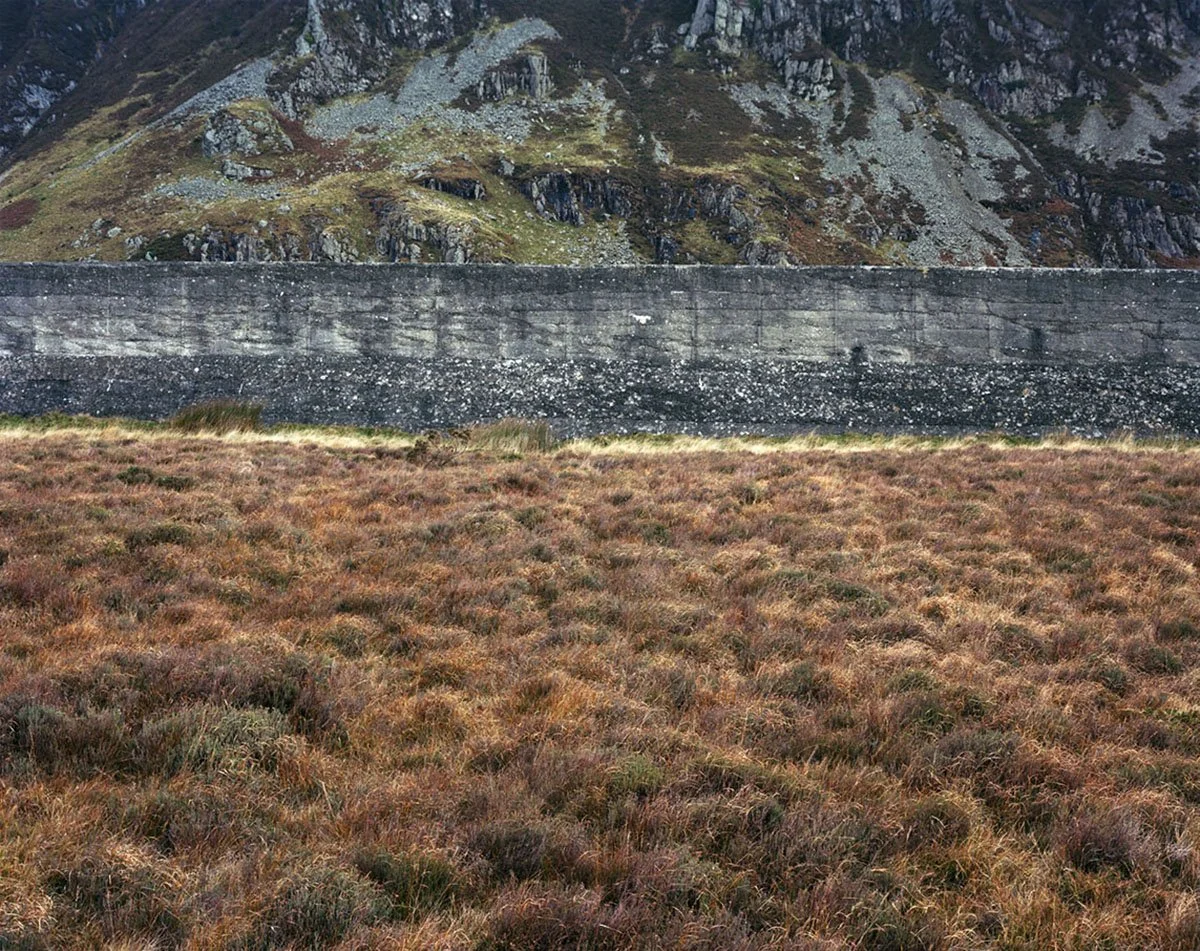The Incongruous Wall - Aled Rhys Hughes
Festival Exhibition
Location: Job Centre / Bay View Shopping Centre
Open: 3rd October - 31st October 2025.
The Incongruous Wall ©Aled Rhys Hughes
The Incongruous Wall
The sight of the wall in Cwm Eigiau is striking, even forty years after I first came across it at the head of the valley. What is it? Why was it built here? Could it really have been intended as a reservoir wall?
The Incongruous Wall ©Aled Rhys Hughes
This ¾-mile-long wall was constructed in 1911 to expand the lake, providing power and water to the nearby aluminium works in Dolgarrog. However, looking at it today, it’s clear the wall was never strong enough to withstand such large volumes of water. On November 2, 1925, after heavy rainfall, the wall collapsed, releasing millions of gallons of water and causing a major disaster in Dolgarrog, where ten adults and six children drowned.
©Aled Rhys Hughes
I’ve visited Cwm Eigiau many times. Initially, I used small cameras, but since the 1990s, I’ve used a large-format camera, starting with black and white film and later switching to colour. Recently, as I revisited these images, I realised they lacked a certain perspective. To capture the wall’s presence in the valley, I’ve incorporated aerial photography.
©Aled Rhys Hughes
I’ve also collected postcards from the time of the disaster and re-photographed the locations featured in them. Rather than simply juxtaposing the old and new, I’ve integrated the postcards into my current images, creating a “then and now” narrative within a single frame.
Through these images, I try to make sense of this massive, incongruous structure perched high in the mountains of Eryri. Its scale is deceptive: imposing in its height, it divides the valley in two. My focus has shifted to themes of division, the hole in the wall, and the metaphorical possibilities that the hole represents.
Aled Rhys Hughes is a distinguished landscape photographer and educator whose work spans over four decades. Renowned for his thoughtful engagement with place, Aled has developed a body of work that is both visually compelling and intellectually grounded. His photography often explores the complex, and at times uneasy, relationship between humanity and the land, delving into themes of memory, history, and environmental consciousness.
He has published three acclaimed photographic books: Mor Goleuni Tir Tywyll (2004), Rhyw Deid yn Dod Mewn (2008), and Mametz (2016). Each publication reflects his deep commitment to documenting and interpreting the landscape, often through a personal and culturally resonant lens.
Aled has exhibited widely, both in solo and group shows. His work has been featured in prestigious venues including the National Library of Wales, St David’s Hall in Cardiff, the Mission Gallery in Swansea, and the National Eisteddfod. His exhibitions are known for their strong sense of place and their ability to provoke reflection on the changing relationship between people and the environment.
Deeply rooted in the Welsh landscape, Aled’s practice is inherently site-specific. He engages not only with the visual aesthetics of the land but also with its narratives—its history, language, and social context. This layered approach adds depth and meaning to his images, inviting viewers to consider the unseen forces that shape the visible world.
In addition to his photographic work, Aled is a committed educator, sharing his knowledge and passion for landscape photography with students and fellow practitioners. His influence on contemporary Welsh photography continues to grow, marked by a unique ability to blend artistry with cultural insight.
All festival exhibitions are FREE to visit.





